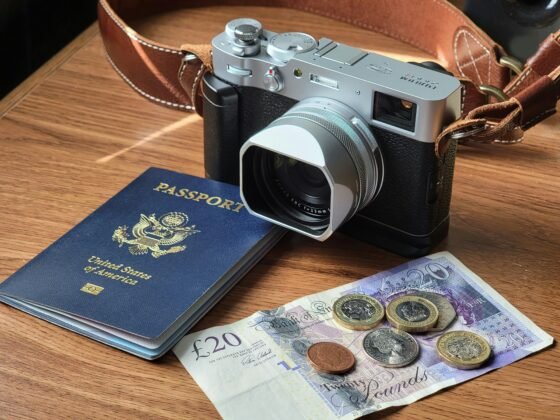
As per the IRS, if you or your employees are traveling away from home for business purposes, most business travel expenses are tax-deductible.
This can provide companies with significant business expense deductions. Plus, knowing which expenses are eligible for tax write-offs can save you trouble during tax season.
Here is a guide to help you understand which travel expenses qualify as business expenses and tax deductions.
What qualifies as business travel expenses?
The IRS clearly states that for businesses to claim deduction on trips, the travel’s primary purpose should be for business. Here’s a checklist to ensure your travel qualifies as a business trip and is in line with the IRS guidelines.
- The trip requires you leave your tax home
According to the IRS, “your tax home is the city or area where your main place of business or work is located.” This means your trip qualifies as “traveling for business” if you leave your tax home for longer than regular working hours. Additionally, travel intentions should be to do business in a different location and not for personal purposes.
- The trip needs to be an “ordinary and necessary” expense
The IRS uses the term “ordinary and necessary” to indicate expenses that are:
- Normal, standard, and acceptable for a business given the industry it’s in
- Helpful and appropriate to keep the business activities going
- The trip is mainly for business purposes
Your business travel qualifies as a business trip if you’re spending most of your time doing business. For example, say you go away for a business trip for an entire week. You spend five days of the week meeting with clients and two days relaxing. That can qualify as a business trip. But if you spend, say, four days of the week lounging around and three days for business meetings, that can count as a vacation.
- The trip needs to be planned in advance
Planning a business trip isn’t easy, and usually, businesses need to make arrangements before employees leave for a business trip—for example, book flights, hotels, and car rental. Before a business trip, the budgets and trips have to be approved by the right person. The company needs to document every expense from pre-trip to post-trip costs and get it timestamped. Doing all this shows there’s a professional intent behind the trip.
Business expenses that are deductible
If a business trip requires employees to stay overnight in a city other than their tax home, the following expenses are eligible for tax deductions related to the travel.
- Transportation
Whether you are traveling to your destination via flight, train, or bus, businesses can deduct 100% of travel costs. Even if you arrange a car rental to take you around, the cost of a rental car is deductible as well. Uber or Lyft rides count as well, but you have to ensure to keep the receipts.
Under transportation, if you take your car, toll and parking fees qualify for deductions. Also, don’t forget your standard mileage rate. For every mile you drive for work, you can currently deduct 57.5 cents.
- Meals
According to the IRS, fifty percent of the cost of business meals are deductible. And for audit purposes, you need to maintain proper documentation to show that the meal was for work purposes. For example, if you are taking a client for lunch to discuss business.
The IRS also offers the option for a business to deduct a specific amount for meals per day. For 2020, the standard meal rate is $66 for travel within the continental United States (CONUS) and $71 for travel outside the continental United States (OCONUS). For accurate calculation, businesses can calculate the per diem expenses of the business travel by using a per diem calculator.
- Accommodation
Business trips usually require you to stay overnight. This means you have to spend on hotels and lodging. Fortunately, the IRS allows you to write-off the cost of accommodation as well. But be sure to get an itemized bill or receipt as proof of business expenses.
- Other business expenses
There are also other necessary expenses that you incur during your business trip can count as business expenses. For example,
- Registration for an event or conference
- Equipment for presentation
- Laundry/ Dry cleaning
- Shipping material or baggage between work locations
- Business calls during a business trip
How to keep track of business expenses
To write off travel expenses, maintaining proper documentation is crucial. Receipts are essential proof of expenses, but it isn’t enough. The IRS requires documentation specifying the purpose of spend, the location where the expense was made, merchant name, amount, date, etc. It is vital to ensure that all expense reports document such information for future reference or scrutinization.
Documenting all your business expenses
An expense report summarizes all spending incurred by you or a traveling employee for a specific business trip or business expense. It tries to streamline, standardize, and remove subjectivity from all business expense reimbursements.
Essential fields to track in an expense report are:
- Date: This field becomes your single source of truth regarding verifying the claimed spending for specific business trips.
- Trip duration: The assigned duration and the number of days to a particular employee helps calculate per diems and mileage.
- Business purpose: This category helps finance teams document the intent behind the specific business spend.
- Employee details: These details cover the name, designation, and department of the employee.
- Expense type: The primary categories are accommodation, travel, food, per diems, cash advances, mileage spends, and other miscellaneous business spends.
- Project/ client: This category helps finance teams correlate business spends based on their respective clients.
- Merchant name: The merchant or vendor details play a crucial role in ascertaining the validity of bills that are submitted by your employees.
- Amount: This category should ideally tabulate against every expense claim that your employees make.
- Total expense amount: Once tabulated, your employees must mention this amount.
- The advance amount received: This helps businesses who provide their employees with cash advances before their business trip.
- Total: Once added with the final amount and the supporting evidence, employees need to fill in this section.
- Undersigned by the employee: This ensures that the employees own up to their expense claims.
- Undersigned by the reporting manager: This ensures that the reporting manager has verified the expense report.
- Undersigned by the finance team: This indicates the finance team has approved the expense report.
The problem with manual tracking of travel expenses
While documenting all the business expenses is necessary, with all the information you have to keep track of, it can be tedious. In addition to handling and storing receipts, employees have to document where, when, and why the expense was made.
Manually documenting all the expenses can lead to several problems:
- The expenses report can contain inaccurate information such as the amount, the date of the expense, etc.
- Physical receipts can be easily damaged or misplaced. This can lead to employees missing out on reimbursement, hence decreasing employee morale.
- It can be challenging for traveling employees to keep track of all business expenses when busy with client meetings, events, etc.
- At the end of the trip, employees have to compile all their receipts and expense reports, taking up a lot of time.
- Manual expense reporting can open doors for fraud. Employees can easily manipulate expense reports and claim more than they should.
With leading businesses turning to the automation of mundane tasks, you must also consider automating labor-intensive or error-prone processes. This not only improves employee and financial productivity but also helps keep a tab on expense fraud.
Turn to a travel reimbursement software
Now that we have covered the disadvantages of manual expense reporting and tracking, we look at the solution to these problems: an AI-based travel reimbursement software.
A survey by HubSpot suggests,
63% of small businesses that switched to a web-based expense management system reduced or eliminated their use of manual means for expense reporting.
To claim a tax deduction without a hiccup when tax season rolls around, keep your receipts together. Better yet, use an expense reimbursement software like Fyle to scan receipts as you make an expense and to eliminate the chances of losing the physical ones. Also, the software can automatically match the receipts to your expense reports.
Additionally, through a travel reimbursement software, you can:
- Store physical receipts digitally by taking a picture of them through the receipt scanning feature.
- Spend less time on expense reporting and tracking by eliminating manual data entry and errors. The software accurately auto-fills all the fields in an expense report form.
- Gather all the travel details, expense reports, and receipts under one system. Having all the documentation helps you to claim deductions easily as well as stay audit-ready.
- Process reimbursements for your traveling employees faster thanks to accurate expense reporting and real-time audit checks by the software.
The bottom line
An automated reimbursement software eliminates one crucial factor- human intervention. The advanced solution comes with excellent features that utilize AI and machine learning. This provides you with a simplified and seamless expense tracking process so that you never miss out on tax deductions!












